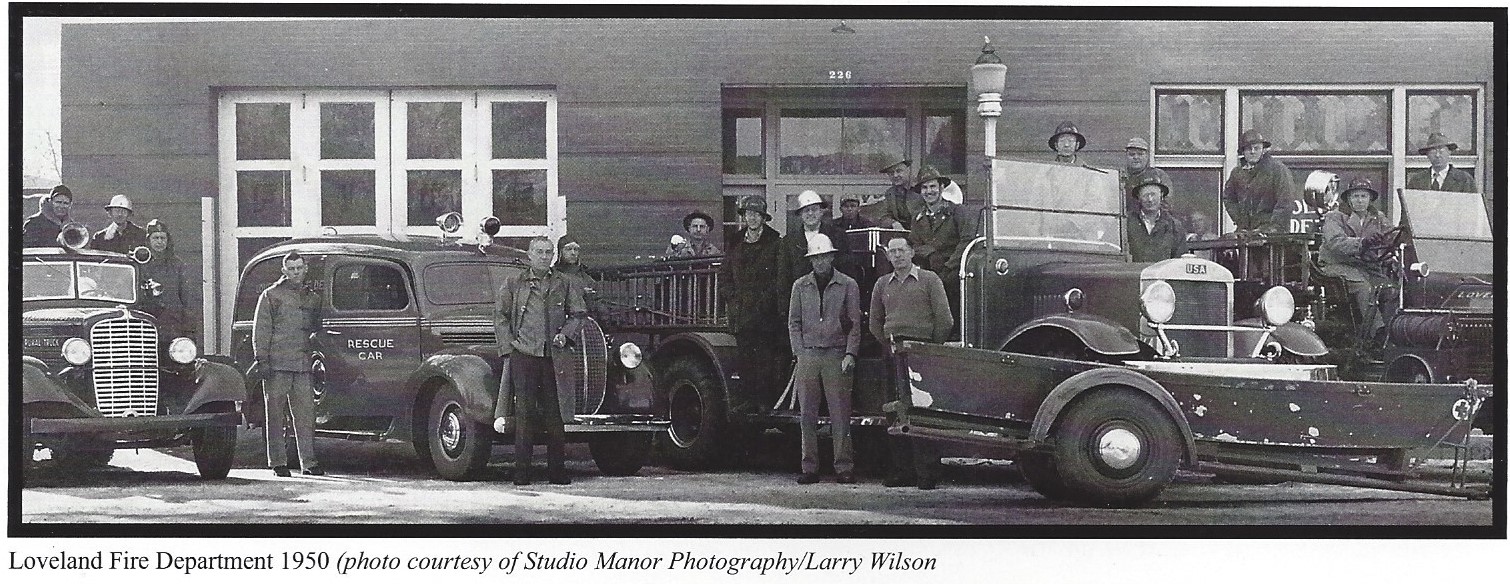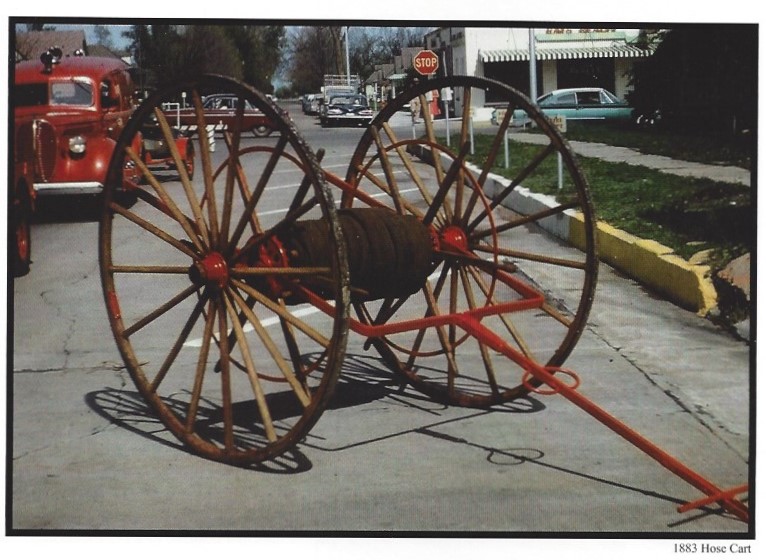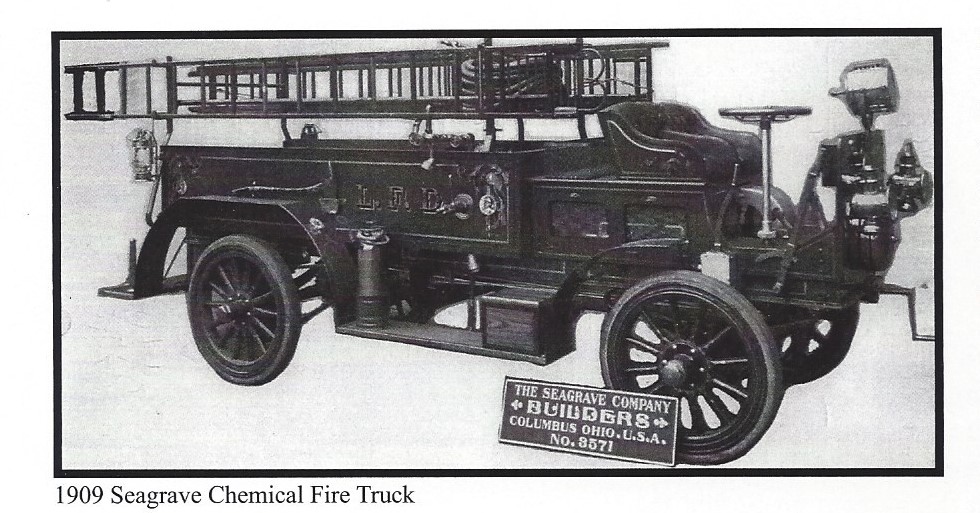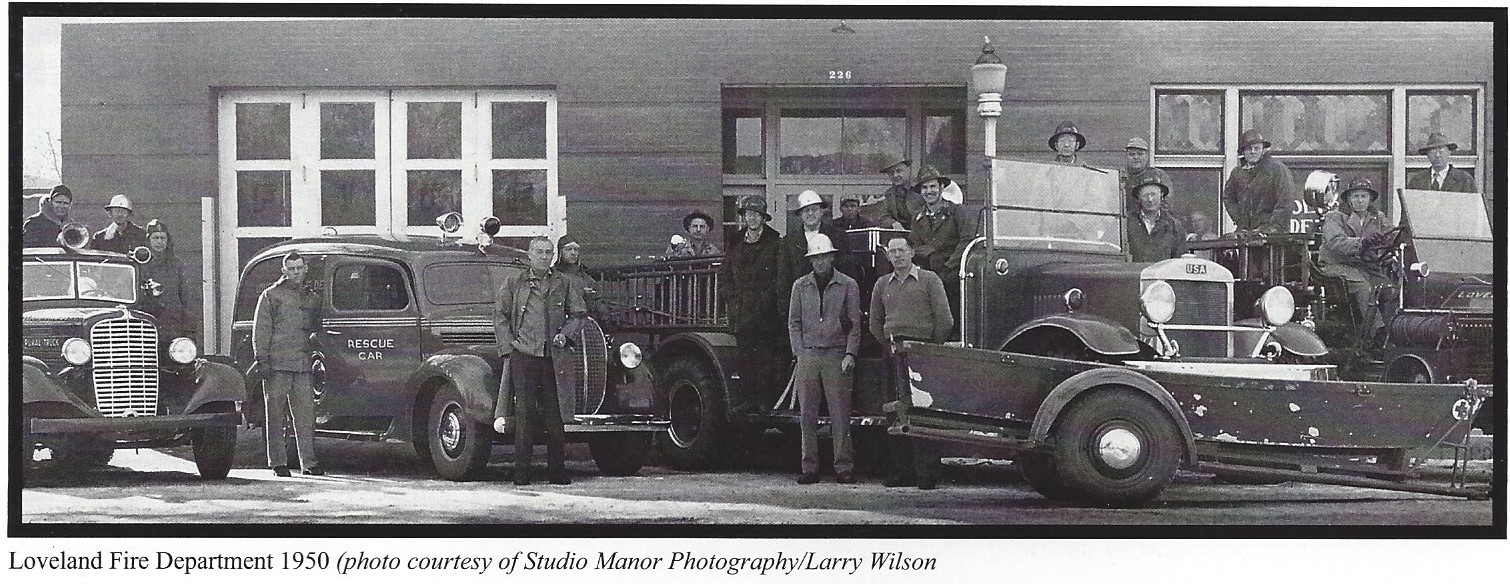If one is familiar with the Loveland Fire Rescue Authority as it exists today, it would be hard to imagine what it was like in the early days. In 1906, the city was rapidly outgrowing the ability of the fire department to continue to provide adequate fire protection. At this time fire protection was still provided by the Hose Company No.1 and the Loveland Hook and ladder, using had drawn carts and minimal equipment. Something had to be done to equip the department to continue. Written below is a News article from April 12, 1906 in the Loveland Register.


FIRE DEPARTMENT ASKS COUNCIL FOR BETTER EQUIPMENT TO FIGHT CITY’S FIRES From Loveland Register Volume 12, Number 15, April 12, 1906
Firemen declare that the present Apparatus is insufficient and ask for a caretaker to protect property from theives.
To the Honorable City Council, City of Loveland, Colorado. The Loveland Fire Department desires to place the following facts before you: The firefighting apparatus of the city of Loveland consists of one hose cart, 1000 feet of hose, one hand truck, ladders, fire extinguishers, rubber coats, hats, lanterns, axes, rubber boots and smoke protectors. These articles are not properly cared for by a very long ways. At present they are kept in an open shed, where anyone so disposed can appropriate, or are scattered among individual members of the Fire department and among City Employees. We know the council has already taken steps to furnish a better temporary structure than the present place. The Fire department appreciates this movement, as only those who have longed for the need can. But it becomes apparent to the members from repeated efforts to care for the apparatus that our system of taking care is wrong. It begins in error. The Chief of the Department is required to give bonds for the care of the apparatus, the property of the city. he cannot afford to take the time necessary to see to this personally, nor can the volunteer members of his company take the time from their own or their employers business to perform these duties. We therefore, the Loveland Fire Department, petition the Honorable City Council to provide a care-taker for the firefighting appaeratus of the City of Loveland. We desire also to present the following reasons for your consideration.
Every member feels deep concern and apprehension when he considers a serious fire in our city. The present apparatus is not adequate at it’s best for a serious fire. The Fire department does not feel justified in asking for the needed apparatus without a better place to keep it and better care of the same. Hose, rubber Coats, Rubber Boots and oil Skins are all short lived under the best of care. They must be cleaned and kept available at any moment. We believe therefore a central place is best for all of this property, and we believe a care-taker should be provided to adjust, clean and repair the same immediately. The growth of our city demands this. In the case of the Box Car fire in January, all of the hose that the cart could carry-a full reel- was stretched out and found to be several rods short. Much valuable time was lost in getting more. We quote this as a forcible example of our need of better care-taking of as well as more apparatus. The city’s growth demands, or soon will, another Hose Cart, more hose, a truck that will convey the members as well as the apparatus, to these new additions. Men cannot run these long distances dragging heavy loads with speed and be ready for efficient service. More hydrants or more hose must be furnished to secure two steams in the residential part of the city. We would also recomend that you at your earliest possible convenience establish a system of Fire Alarms.
Representatives of the Underwriters declare our apparatus inefficient, and our insurance rates must remain high or go higher. The Firemen are volunteers, strictly, as they meet once a month besides attending every fire day or night. They face danger whenever they do this. All this they do willingly and cheerfully and will continue, but they would feel much more confidence in the success of their efforts with the suggested improvements. They would hope for the thanks of the householder rather than his curses for any loss, which they now half expect. A loss of confidence in our means of firefighting will hurt us in many ways. It will lose us good members, also a general lack of interest and spirit. We therefore ask that our petition for a caretaker is a long step in advance.
The L.F.D Joint Committee
M.E. Knapp, Frank Puntenny, E.M. Brown, Ed Chasteen, Wm. Coffman, M. McPhee
































